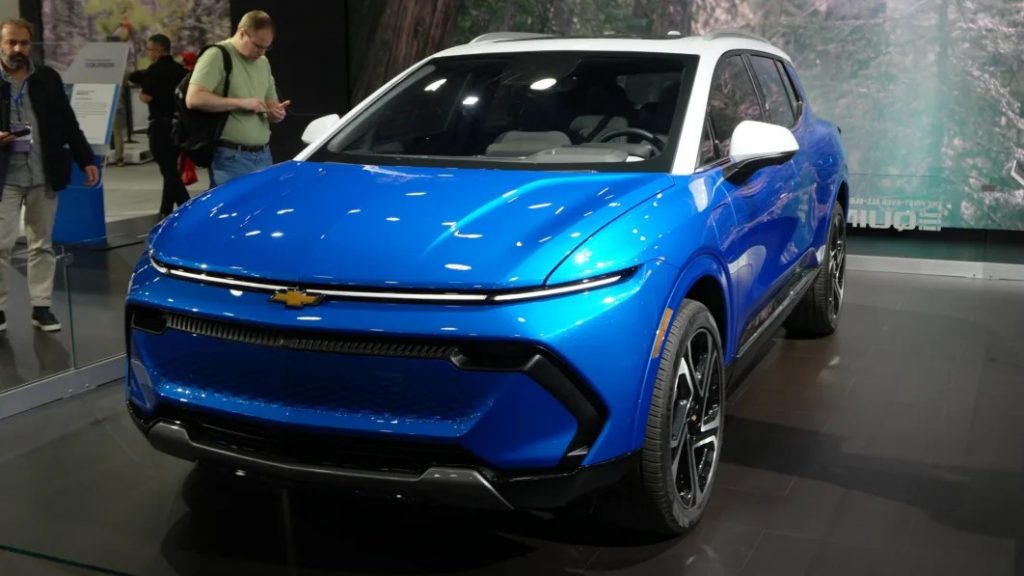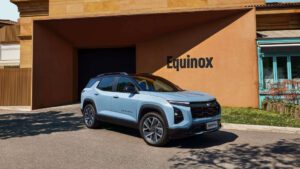GM electric vehicles will be eligible for $7,500 tax rebate — in 2-3 years

The U.S. Congress passing the Inflation Reduction Act changed the formula enabling electric vehicle buyers to claim a federal tax credit. While it removed caps on how many vehicles a manufacturer could sell before no longer being eligible for the credit, it created a set of manufacturing and content restrictions that a number of carmakers have been contesting since the ink dried. The most debated elements of the IRA in this regard are:
Vehicles will need to be built with minerals that are extracted or processed in a country the U.S. has a free trade agreement with. The minimum amount starts at 40% in 2023, climbing 10% every year.
Vehicles must have a battery that includes a large percentage of components that were manufactured or assembled in North America. Next year, this means at least 50% of component value, rising 10% every year.
The deal caps the suggested retail price of eligible vehicles at $55,000 for new cars and $80,000 for pickups and SUVs.
When an OEM satisfies the first two requirements, buyers of its EVs can claim the full $7,500 credit for up to 10 years after eligibility begins. If an OEM satisfies just the 50% battery manufacturing portion, buyers of its EVs can claim $3,750. There will be a pause on widescale full tax credits while automakers decide on their manufacturing plans and establish supply agreements that would qualify them, then build the facilities and get materials on ships and trains.
GM has made announcements all year about building such infrastructure. Seeking Alpha posted a transcript of GM’s Q3 earnings call in which CEO Mary Barra presented a timeline to satisfy both conditions. Barra said “based on our expectations with the supply moves that we’ve already made,” she believes “some of the vehicles will be eligible for the $3,750 credits starting in January, and then we’ll ramp toward full qualification across the broad portfolio in two to three years as some of the different supply comes online in North America or in the United States.
GM plans to launch 30 new EVs by 2030, and within two years from now anticipates having at least six under the MSRP threshold depending on their classifications as a car or SUV — the Cadillac Lyriq, the Chevrolet Equinox EV, Blazer EV, entry trims of the Silverado EV, a Chevrolet EV below the Equinox that could be the replacement for the Bolt, and entry trims of the GMC Sierra EV. It’s possible there will be a smaller, less expensive GMC Hummer EV eventually, we still don’t know where the coming Buick EV will land, nor when the Cadillac Optiq and Symboliq will arrive. The new Ultium-based EVs on the way before then are too expensive to qualify.
Barra noted that the commercial component of the rebates will be important because of GM’s BrightDrop van division. “We also think there’s a significant opportunity to potentially leverage the tax credit of up to $45 per kilowatt hour with respect to battery cells and battery modules produced in the U.S.,” she said. “I think we’re better positioned than most because of our aggressive plan to get the battery plants and the pack assembly in this country.” The automaker’s Ultium cell plant in Ohio partnership with LG came online earlier this year, with another plant to follow every year as GM works toward a goal of 1 million yearly units of EV production capacity in North America by 2025.
Over at Ford, CEO Jim Farley told analysts, “Next year, we believe we’ll meet the $3,750 critical minerals credit requirement on certain Mustang Mach-E and F-150 Lightning models. In ’24, the rules will further restrict this critical materials credit. So, we believe it’s a fairly level playing field right now for all the OEMs as our supply chain of critical minerals extracted or processed in the U.S. and [the Free Trade Area] develops.” He is also gung-ho on the commercial rebate potential, calling it “super important for Ford” and saying, “Ford is the number one commercial vehicle brand in the U.S., and our commercial customers can now claim next year $7,500 per EV vehicle they buy with no restrictions on battery sourcing or manufacturing. Our preliminary estimate is that between 55% and 65% of all of our commercial vehicle customers will qualify.”



